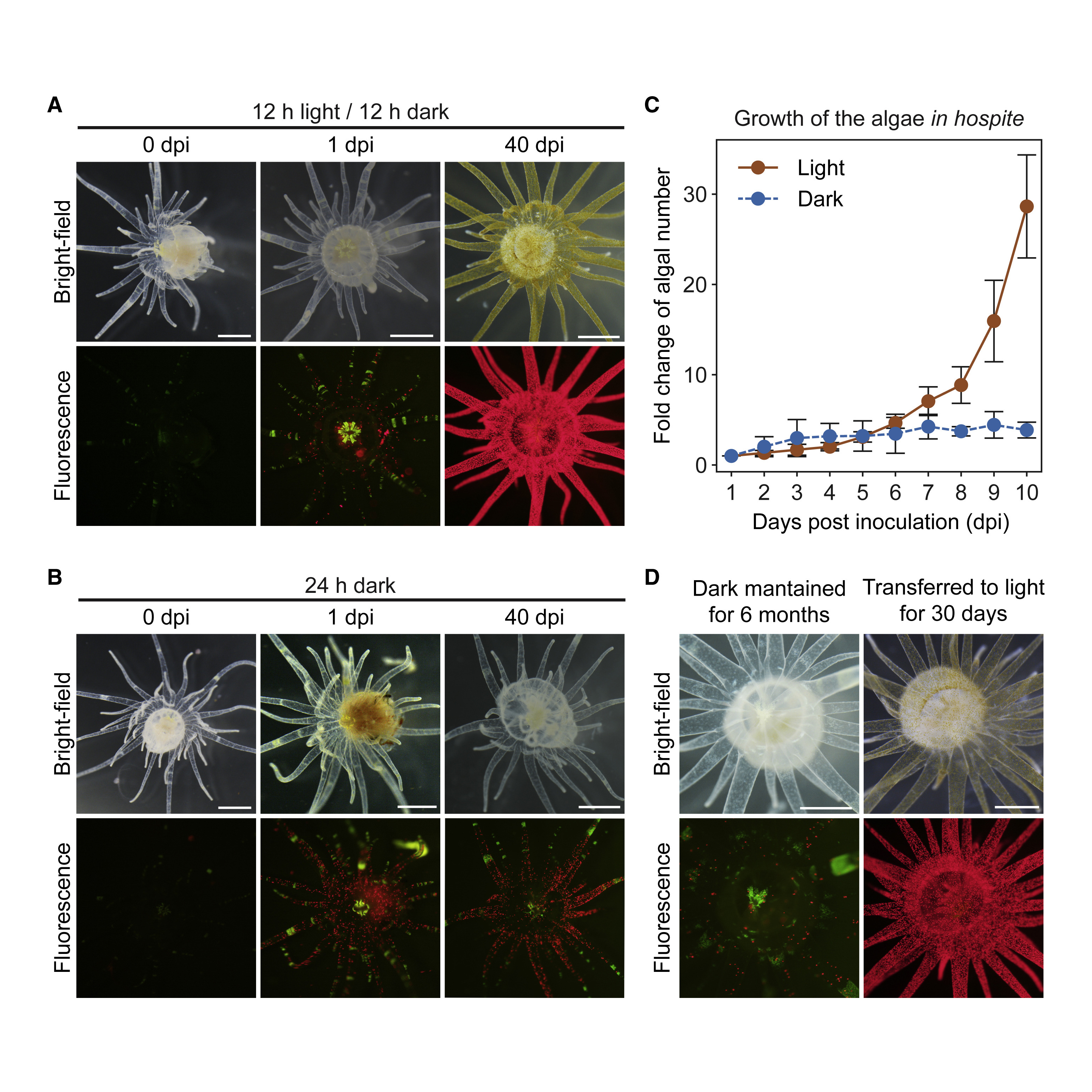 The Whitney Laboratory for Marine Bioscience
The Whitney Laboratory for Marine Bioscience

Congratulations to Dr. Casandra Newkirk and Dr. Mark Q. Martindale for their contributions to a recent paper entitled, "Cnidarian-Symbiodiniaceae symbiosis establishment is independent of photosynthesis" published in the journal Current Biology (Jinkerson et al., Cnidarian-Symbiodiniaceae symbiosis establishment is independent of photosynthesis, Current Biology (2022), https://doi.org/10.1016/j.cub.2022.04.021). https://www.sciencedirect.com/science/article/pii/S0960982222005905?via=ihub
This paper described the first forward genetic approach that used mutagenesis of Symbiodiniacea algae to investigate the nature of the symbiotic relationship between corals and algae.
Many cnidarian species, especially corals, their close cousins the sea anemones, and true "jellyfish" can generate stable symbiotic relationships with algae/dinoflagellates. The algal symbionts are phagocytosed ("eaten") by host gastrodermal (gut) cells but instead of being digested, they are "protected" by the host cells. In the presence of sunlight, the algal cells photosynthesize, releasing fixed carbon (e.g. sugars) into the cytoplasm that are used as an energy source by the host cells. In exchange, the symbiont obtains phosphorous and nitrogenous substrates required for the photoysynthetic process from host cells (and protection from predation!). When this symbiotic relationship breaks down in coral reefs it results in the all too common phenomenon of ‘coral bleaching’ that is threatening the health of reefs worldwide.
A major hypothesis in the field has been that the photosynthetic ability of the symbiont was the driving force for the stable maintenance of the symbiotic relationship (e. g. why would the host take up a cell from which it does not benefit?). This paper examined one species of coral (Acropora), one species of sea anemone (Aiptasia), and one scyphozoan jellyfish (Cassiopea) that were all exposed to algae with genetic deficiencies in their ability to photosynthesize. Surprisingly, these algal symbionts were taken up and formed stable relationships for months in host cells of the coral, sea anemone and jellyfish. In the coral species, ingested symbionts actually grew and divided, without generating any photosynthate to the host! These results raise interesting questions about the recognition and host compatibility of the two symbiotic partners and provides a powerful new genetic approach for understanding symbiotic interactions.
Casandra’s contribution to this paper includes generation of all the data for the "upside down jellyfish", Cassiopea. Casandra performed these studies when she was a graduate student here at the Whitney Lab. Casandra is continuing to work with Cassiopea as a postdoctoral researcher in Tingting Xiang's lab in the Department of Biology at the University of North Carolina in Charlotte. Congratulations Casandra! We look forward to your next exciting contribution to science!